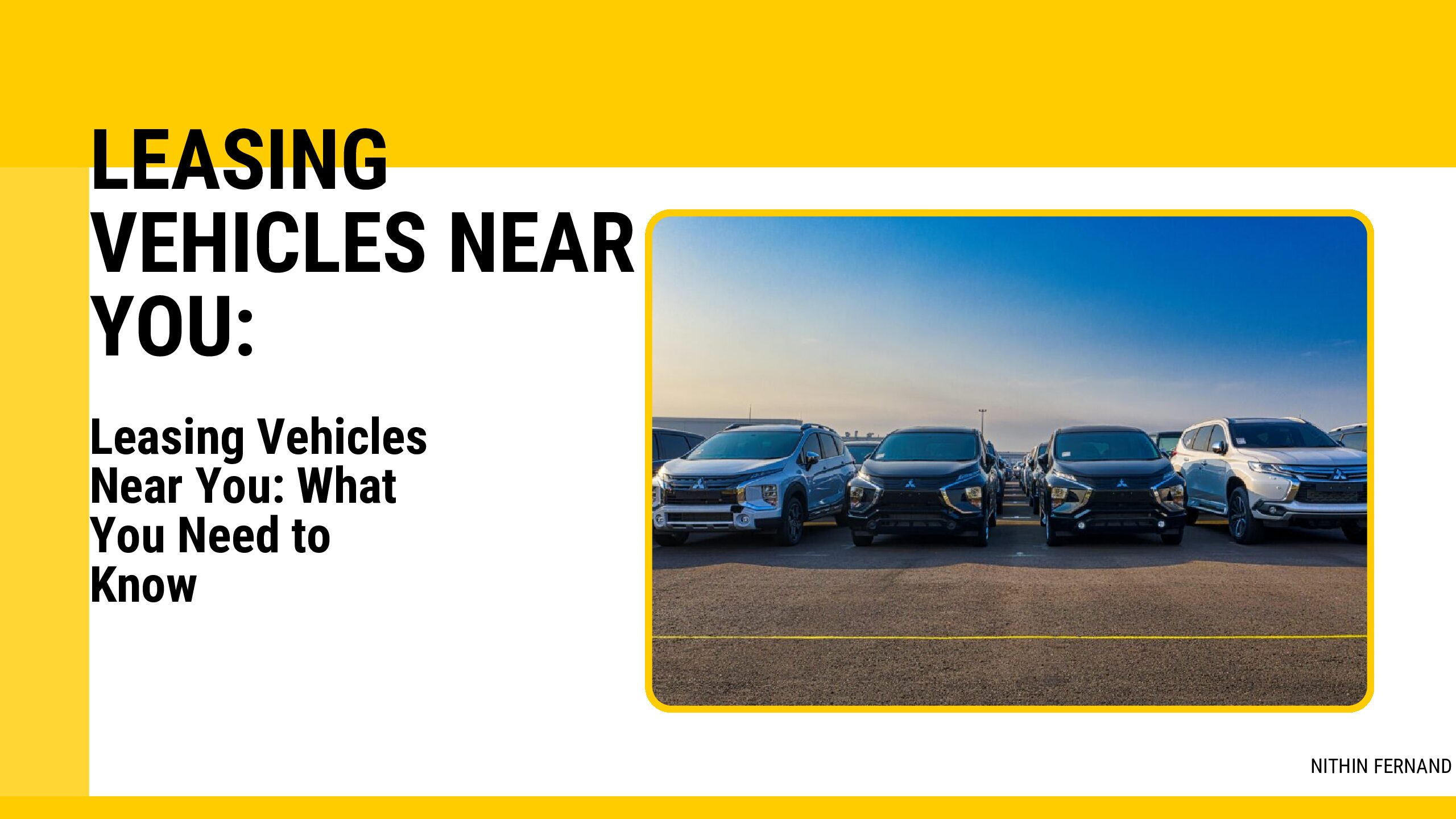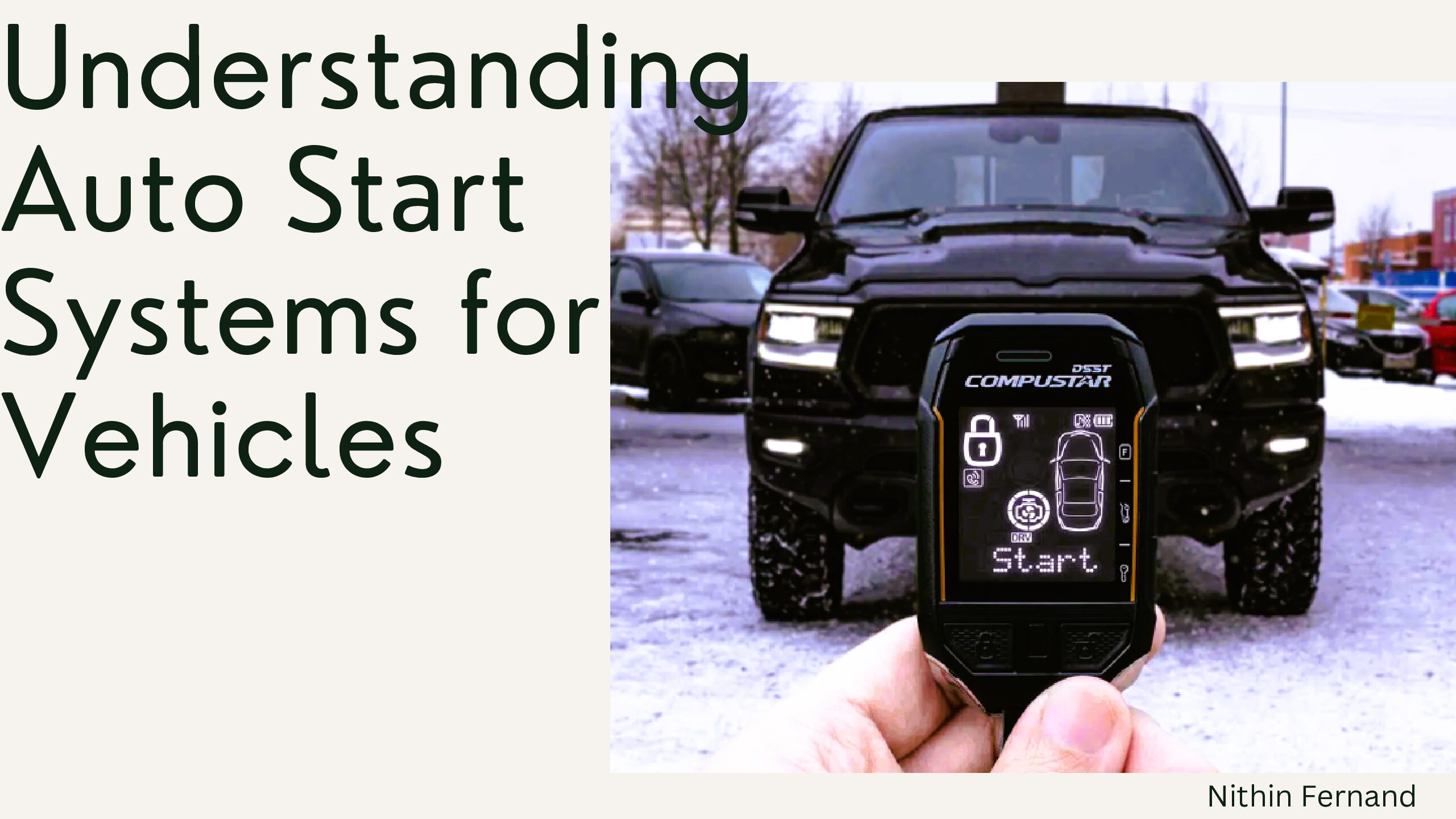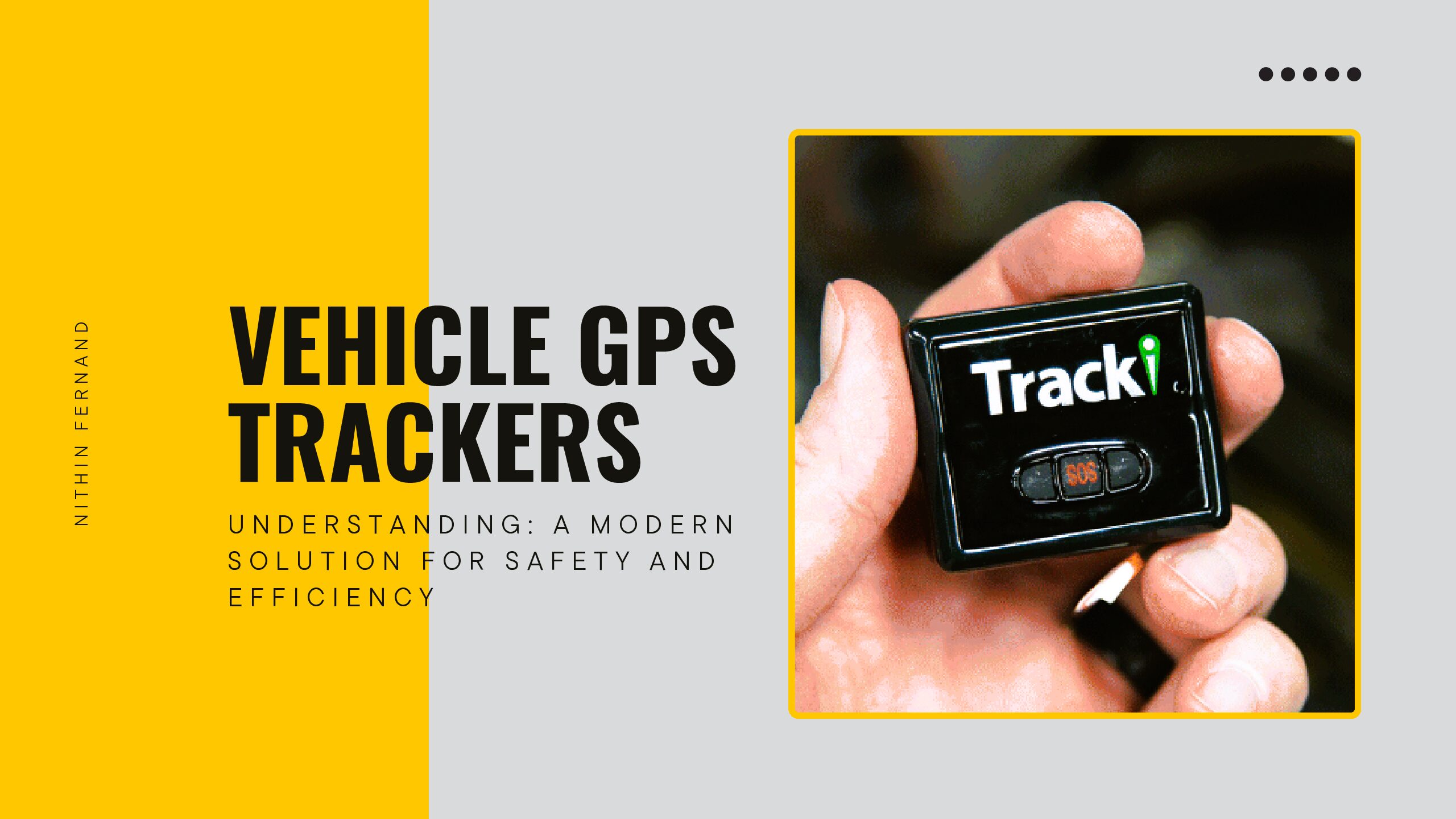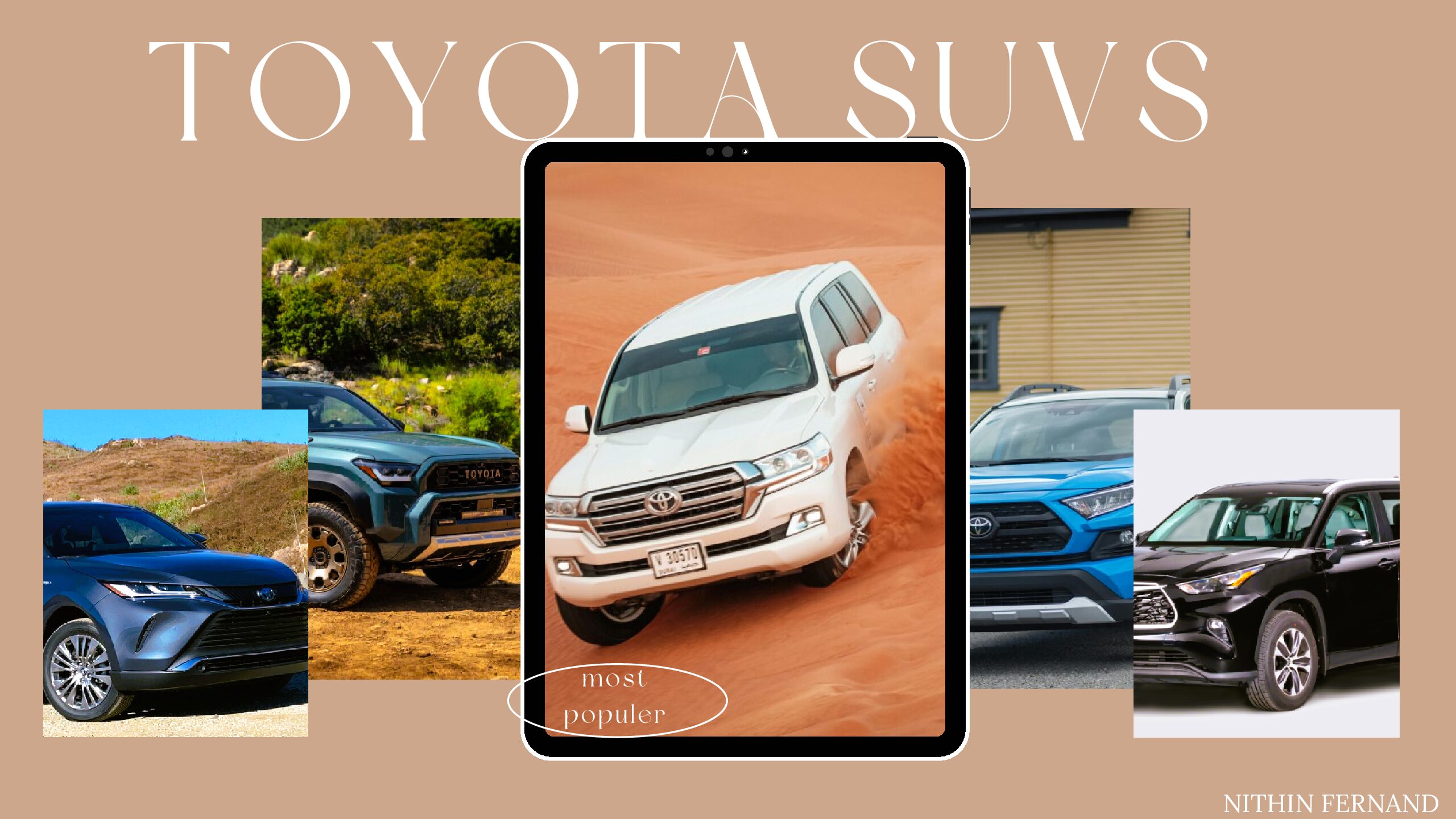Leasing Vehicles Near You: What You Need to Know 2024
In today’s fast-paced world, many consumers are choosing vehicle leasing as a viable alternative to traditional car buying. Vehicle leasing allows individuals to drive a new car without the commitment of long-term ownership, offering the chance to enjoy the latest models and technologies with lower monthly payments. This flexible approach caters to those who prefer to change vehicles every few years, offering a way to drive top-of-the-line models without the hefty price tag associated with purchasing.
The growing popularity of leasing stems from its affordability, ease of management, and the convenience it offers. As drivers seek more budget-friendly options while still enjoying the comforts and innovations of modern vehicles, leasing has become an attractive choice for many.

The purpose of this article is to provide you with essential information about leasing vehicles in your area. Whether you’re considering leasing for the first time or exploring your options among local dealerships, this guide will help you navigate the leasing process, understand the benefits and drawbacks, and make an informed decision that suits your needs.
Table of Contents
Understanding Vehicle Leasing
In an era where flexibility and affordability drive consumer choices, understanding vehicle leasing is crucial for anyone considering this option. This section will clarify the definition of vehicle leasing, explain how it compares to buying, and outline the leasing process, including monthly payments, lease terms, and mileage restrictions. Additionally, we will differentiate between closed-end and open-end leases, as well as personal versus commercial leasing. By grasping these essential concepts, you’ll be well-prepared to navigate the leasing landscape and make informed decisions that meet your driving needs.
Definition of Vehicle Leasing
Vehicle leasing is a financing arrangement that allows individuals or businesses to use a vehicle for a predetermined period while making regular payments, typically lower than those required for purchasing the vehicle outright. At the end of the lease term, the lessee returns the vehicle to the leasing company, having had the full use of it without the financial commitment associated with ownership.
How Leasing Works Compared to Buying
When comparing leasing to buying, it’s essential to understand the financial implications of each option.
- Leasing:
- In a lease agreement, you essentially pay for the vehicle’s depreciation—the decline in value—during the lease term rather than the full purchase price. Consequently, this generally results in lower monthly payments.
- For most leases, you are not responsible for the vehicle’s value at the end of the lease since you do not own it. Instead, you return it to the dealership or leasing company.
- Buying:
- When you buy a vehicle, whether through cash or financing, you make payments on the entire value of the car. At the end of your loan term, you own the vehicle outright and can choose to keep it, sell it, or trade it in.
- Buying means you have an asset that can build equity over time, which can be advantageous if you decide to sell or trade it later.
How Leasing Works
Leasing a vehicle typically involves a few key components:
- Monthly Payments: Your monthly payments are generally based on the vehicle’s estimated depreciation during the lease term, along with the interest rate (often called the “money factor”). These payments are usually lower than financing payments for purchasing a vehicle.
- Lease Term: Lease terms can range from 24 to 48 months, with 36 months being a common duration. The choice of lease length can affect monthly payments, the vehicle’s warranty coverage during the lease, and potential end-of-lease options.
- Mileage Restrictions: Most leases come with mileage limits, usually ranging from 10,000 to 15,000 miles per year. Exceeding these limits can result in additional per-mile charges at the end of the lease, so it’s vital to select a mileage allowance that fits your driving habits.
Types of Leases
There are primarily two types of leases you should be aware of:
- Closed-end Lease: This is the most common type of lease, particularly for personal vehicles. At the end of the lease term, you simply return the vehicle to the dealer. You are not liable for any depreciation beyond what was agreed upon at the outset. If you exceed the mileage limit or if the car has excessive wear, you may incur additional charges.
- Open-end Lease: Often used for commercial leasing, this type of lease may involve a final balloon payment at the end of the lease term based on the residual value of the vehicle, adjusted for mileage and wear. If the vehicle is worth less than the agreed residual value, the lessee may have to pay the difference.
- Personal vs. Commercial Leasing:
- Personal Leasing: Targeted at individuals wanting a personal vehicle for everyday use, involving terms and conditions suitable for personal needs.
- Commercial leasing: designed for businesses that require vehicles for company use. It may include specific benefits like tax write-offs and customized leasing terms based on business requirements.
Benefits of Leasing a Vehicle
Leasing a vehicle offers several noteworthy advantages that can make it an appealing option for various consumers. From financial flexibility to the joy of driving new models, here are some of the key benefits of leasing.
Lower Monthly Payments
One of the most significant benefits of leasing is the lower monthly payments compared to financing a vehicle purchase. When you lease, you’re primarily paying for the vehicle’s depreciation during the lease term rather than the entire purchase price. As a result, lessees often find themselves enjoying a more affordable payment structure, allowing them to access higher-end models or additional features without a substantial financial burden. This affordability can make leasing a more attractive option for consumers on a budget or those seeking to keep their monthly expenses manageable.
Access to New Models
Leasing provides an excellent opportunity for drivers to enjoy the latest vehicles equipped with cutting-edge technologies, safety features, and comfort enhancements. Since leases typically last two to four years, consumers can regularly upgrade to the newest models, experiencing the latest innovations in automotive design and function. This benefit is especially appealing to those who prioritize having the newest features for safety, entertainment, and efficiency in their vehicles.
Warranty Coverage
Another advantage of leasing is the maintenance benefits associated with driving newer cars often still under warranty. Most leased vehicles are covered by the manufacturer’s warranty for the entire lease term, which means routine maintenance costs are usually minimal. This coverage reduces the worry of unexpected repair costs, allowing lessees to drive with peace of mind. Additionally, many dealerships offer maintenance packages as part of the lease, further simplifying the car ownership experience.
Flexible Terms
Leasing offers flexibility in vehicle choice and terms that are often not available with traditional purchasing. If your preferences change or your needs evolve, leasing allows you to upgrade to a different vehicle every few years. This adaptability can be beneficial for individuals or families whose requirements might change—whether it’s needing a more spacious vehicle for growing children or a fuel-efficient car for a new commute. The option to frequently switch vehicles keeps your driving experience fresh and aligned with your lifestyle.
Drawbacks of Leasing a Vehicle

While leasing a vehicle provides several benefits, it also comes with certain drawbacks that potential lessees should consider before making a decision. Understanding these downsides can help you weigh your options more effectively.
Mileage Limits
One of the most significant drawbacks of leasing is the mileage limits typically imposed by leasing agreements. Most leases come with standard annual mileage allowances, often between 10,000 and 15,000 miles. Exceeding these limits can result in substantial penalties, usually charged on a per-mile basis, which can quickly add up. If you have a long daily commute or frequently travel long distances, a lease might not be the best option for you unless you negotiate a higher mileage limit upfront, which can increase monthly payments.
No Ownership
When you lease a vehicle, you do not have ownership rights to it, which means you won’t build any equity in the car over time. At the end of the lease term, you will return the vehicle to the leasing company without any asset to show for your payments. This contrasts with purchasing a vehicle, where you eventually own the car outright and can sell or trade it in to recoup some of your investment. For those who prefer the long-term benefits of asset ownership, leasing may feel less rewarding.
Customization Restrictions
Leasing agreements often come with customization restrictions that limit your ability to modify the vehicle. Most leasing companies prohibit alterations, such as changes to paint, interior modifications, or the installation of aftermarket accessories. This can be a disappointment for individuals who enjoy personalizing their vehicles or who want to install features that enhance their driving experience. When leasing, you must generally return the car in its original condition, which can also limit your ability to express your style or meet specific needs.
Potential for Additional Fees
Leasing may incur additional fees that can catch lessees off guard. Apart from penalties for exceeding mileage limits, you may also face charges for excessive wear and tear on the vehicle, which can lead to unexpected costs at the end of the lease. Additionally, there may be fees related to the early termination of the lease or when opting not to purchase the vehicle at the end of the lease term. These possible fees add another layer of financial consideration that leasing candidates should keep in mind.
How to Find Lease Vehicles Near You
Finding the right lease vehicle involves a combination of online research, local dealership visits, and leveraging comparison sites. Here are some effective strategies to locate the best leasing deals in your area.
Online Research
Start your search with online research to gather a wide range of information on leasing options available near you. Utilize search engines and specialized car leasing websites to discover local deals and read reviews from other users. Popular sites often provide inventory listings, estimated monthly payments, and promotional offers that indicate what to expect when you visit a dealership. Taking the time to compare prices and lease terms online can help you identify the best options that fit your budget and vehicle preferences.
Utilizing Local Dealerships
Visiting local dealerships is crucial when searching for lease vehicles. Personal interactions can provide valuable insights that online listings may not offer. Additionally, local dealerships often have unique promotions or inventory that might not be reflected on websites. By speaking directly with sales associates, you can negotiate lease terms more effectively, ask about current deals, and even arrange for test drives. This hands-on experience allows you to assess the comfort and handling of different vehicles, helping you make a more informed selection.
Exploring Comparison Sites
To streamline your search further, you can leverage comparison sites that aggregate leasing offers from multiple dealerships. Websites like TrueCar, Cars.com, and Edmunds allow users to input their desired vehicle make and model, along with their geographical location, to receive side-by-side comparisons of leasing options. These platforms often include pricing, mileage restrictions, and lease terms, making it easier to identify the best deal for you. By utilizing these sites, you can save time and ensure you’re getting the most competitive offers available.
Checking for Manufacturer Promotions
Keep an eye out for manufacturer promotions that can make leasing even more attractive. Automakers frequently offer special leasing incentives, such as reduced monthly payments, cash bonuses, or promotional rates for specific models. These promotions can vary by region, so it’s worthwhile to check the websites of the manufacturers you’re interested in or visit their local dealerships. Signing up for newsletters or following local dealerships on social media can also help you stay informed about any upcoming offers that could save you money on your next lease.
Key Factors to Consider When Leasing
A vehicle involves more than just choosing a model; it’s important to evaluate various factors that will impact your overall leasing experience. Here are some key considerations to keep in mind when entering a lease agreement.
Lease Duration and Terms
When reviewing a lease agreement, pay close attention to the lease duration and terms. Typical leases last between 24 and 48 months, but understanding the specific terms is crucial. Look for details on mileage limits, which can affect your costs if you exceed them. Additionally, consider the terms related to wear and tear, early termination penalties, and any fees associated with returning the vehicle. Ensure you fully understand any restrictions or commitments laid out in the contract, as well as your options for renewing or terminating the lease at the end of the term.
Monthly Payments and Down Payment
Creating a budget for your monthly payments and down payment is vital before signing a lease. Monthly payments can vary significantly based on factors such as the vehicle’s price, the down payment amount, the lease term, and the interest rate (often referred to as the money factor). Typically, a higher down payment will result in lower monthly payments, but it’s essential to balance up-front costs with your overall budget. Moreover, factor in potential additional costs, such as taxes, fees, and insurance premiums, to determine the total affordability of the lease.
Insurance Considerations
Leasing a vehicle can have implications for your insurance costs that you should be aware of. Many leasing companies require higher levels of coverage compared to what may be mandatory for owned vehicles. You might need comprehensive and collision coverage to protect the leasing company’s investment, which can elevate your insurance premiums. Before finalizing the lease, get quotes from insurance providers to compare costs and understand the coverage requirements. Factor these costs into your overall lease budget to avoid any surprises.
End-of-Lease Options
At the end of your lease, you will have several options to consider, which can affect your decision to lease. Generally, you can choose to return the vehicle, purchase it for a predetermined buyout price, or lease a new vehicle. When making this decision, evaluate the vehicle’s market value compared to the buyout price to determine if purchasing makes financial sense. If you choose to lease again, check for loyalty incentives that some manufacturers offer to returning lessees. Being aware of these options in advance can ensure a smoother transition at the end of your lease term.
The Ultimate Guide to the Best Sports Utility Vehicles of 2024
NITHIN FERNAND
Tips for a Successful Leasing Experience
Having a successful leasing experience involves more than simply selecting a vehicle. By following these practical tips, you can navigate the leasing process and ensure that you make the best decisions for your needs.
Negotiate the Lease Terms
One of the most important aspects of leasing a vehicle is the negotiation of lease terms. Just like buying a car, leasing agreements are often negotiable, and being proactive can lead to better payment options and terms. Before you begin negotiations, research the market value of the vehicle and any promotional offers that may be available. Prepare to discuss aspects such as the money factor (interest rate), total lease amount, down payment, and monthly payments. A little negotiation can result in significant savings over the life of your lease. Don’t hesitate to walk away if the terms do not meet your expectations; there are always multiple dealerships willing to work with you.
Inspect the Vehicle Thoroughly
Whether you’re leasing a new vehicle or a certified pre-owned one, it’s crucial to inspect the vehicle thoroughly before signing the agreement. Check for any exterior or interior damage, inquire about the vehicle’s maintenance history, and ensure that all systems (such as air conditioning, brakes, and electronics) are functioning properly. Document any existing wear and tear, as this can help prevent disputes when returning the vehicle at lease end. Additionally, schedule a final inspection at the end of the lease to verify that the vehicle meets the specified condition standards, thereby avoiding any unexpected fees for excessive wear or damage.
Read the Fine Print
It cannot be stressed enough how critical it is to read the fine print of your lease agreement. Ensure you understand all terms and conditions before signing, including mileage limits, fees for excess wear and tear, termination penalties, and obligations at the end of the lease. Pay careful attention to any clauses that may seem vague or complex, and don’t hesitate to ask the dealership for clarification. Understanding every aspect of the agreement will help you avoid surprises during the lease period and at lease end, leading to a more satisfying leasing experience.
Conclusion
In this article, we explored various aspects of leasing vehicles to help you make informed decisions that suit your lifestyle and needs. We started by discussing how to find lease vehicles near you through online research, local dealership visits, comparison sites, and checking for manufacturer promotions. We then identified key factors to consider when leasing, including lease duration and terms, budgeting for monthly payments and down payments, insurance considerations, and end-of-lease options.
We also provided practical tips for a successful leasing experience, highlighting the importance of negotiating lease terms, thoroughly inspecting the vehicle, and understanding the fine print of lease agreements.
As you contemplate leasing a vehicle, it’s essential to assess your specific needs and preferences to ensure the lease aligns with your lifestyle. Consider factors such as how much you drive, the type of vehicle you desire, and your budget constraints.
We encourage you to take the next step: visit local dealerships or explore reputable websites to discover the leasing options available in your area. A wealth of opportunities awaits you, and with the right information and approach, you can find the perfect lease that meets your needs.
FAQ
Here are some common queries related to vehicle leasing, along with clear answers to help you understand the leasing process better.
1. What happens if I exceed my mileage limit?
If you exceed the mileage limit specified in your lease agreement, you will incur penalties, typically charged on a per-mile basis. Rates can vary but are often between 0.15 to 0.15 to 0.30 per mile over the allowance. To avoid these fees, it’s essential to accurately estimate your potential mileage when agreeing to the lease terms. In some cases, you may have the option to negotiate a higher mileage limit at the outset, which can help alleviate concerns if you expect to drive frequently.
2. Can I lease a used vehicle?
Yes, you can lease a used vehicle! Many dealerships offer leasing options for certified pre-owned (CPO) vehicles. Leasing a used car can sometimes provide lower monthly payments compared to leasing a new one. However, keep in mind that the terms and conditions of leasing used vehicles can differ. It’s crucial to read the lease agreement carefully and understand any potential limitations, such as mileage and maintenance requirements.
3. What should I do at the end of my lease term?
As you approach the end of your lease, you have a few options to consider:
- Return the Vehicle: You can return the vehicle to the leasing company as per the agreement. Make sure to perform a thorough inspection and address any required repairs beforehand to avoid additional charges.
- Purchase the Vehicle: If you’ve enjoyed the car and it’s in good condition, you may opt to buy it for the predetermined buyout price stated in your lease. Evaluating the current market value compared to the buyout price can help you make a cost-effective decision.
- Lease a New Vehicle: Many dealerships provide incentives for returning lessees to lease a new vehicle. You can start the process of selecting a new car and negotiate the terms of a new lease at the dealership.







